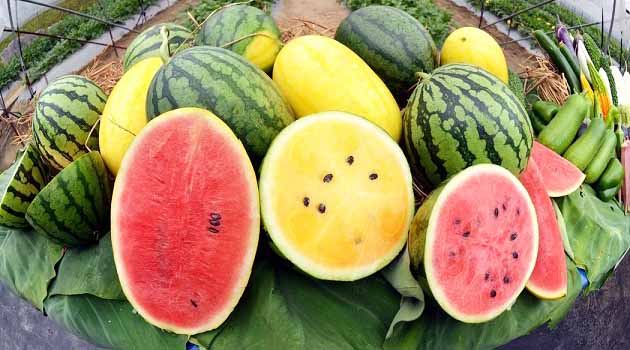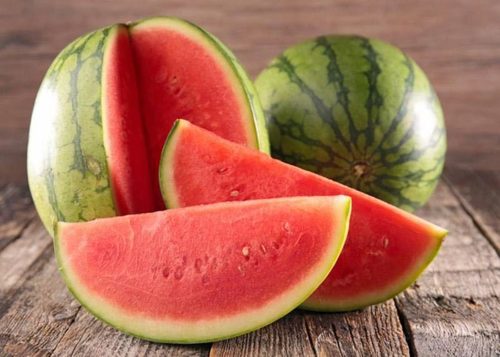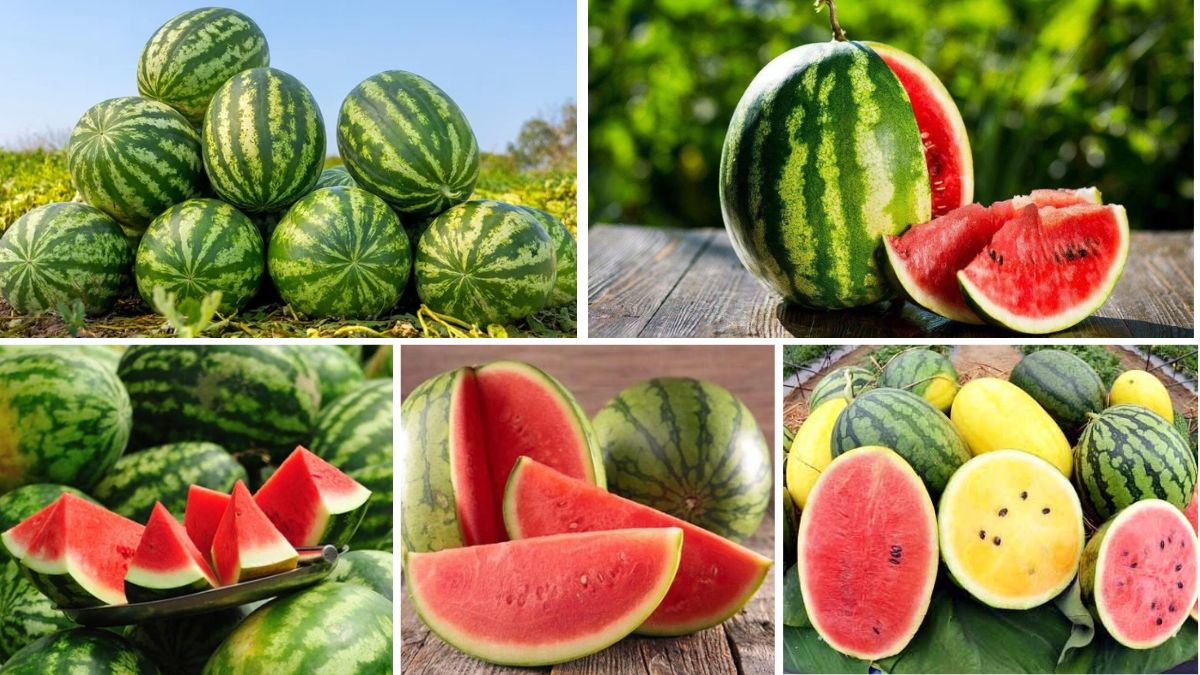Watermelon (Citrullus lanatus) is one of the world’s most popular fruits, celebrated for its juicy sweetness, high water content, and refreshing flavor. Native to Africa, watermelon has become a staple fruit in tropical, subtropical, and even temperate regions. Its global popularity has spurred extensive trade, making watermelon an important commodity in the international fruit market.
This article explores the countries that import the most watermelons, analyzing trade trends, import volumes, major suppliers, and factors driving international demand.
Watermelon: An Overview

Watermelon is more than just a refreshing summer fruit; it is a nutritional powerhouse and a global trade product:
- High Water Content: Comprising over 90% water, watermelon is excellent for hydration.
- Rich in Nutrients: Provides vitamin C, vitamin A, antioxidants, and dietary fiber.
- Economic Significance: The fruit contributes substantially to the agricultural export and import economies worldwide.
Global Watermelon Production
Before discussing imports, it’s essential to understand the global production landscape. China is the largest producer, accounting for over 60% of global watermelon production. Other leading producers include Turkey, Iran, Brazil, the United States, and Mexico. While production is concentrated in a few countries, consumption and import demand are widespread due to seasonal availability, quality preferences, and trade dynamics.
Top Countries Importing Watermelons
1. United States
The United States is the largest importer of watermelons globally, particularly during off-season months when domestic production is limited.
Import Highlights:
- Major suppliers include Mexico, Honduras, Guatemala, and Costa Rica.
- Mexico is the primary supplier due to proximity, consistent quality, and competitive pricing.
- Imports primarily occur between October and April, complementing domestic summer production.
Consumption Trends:
- Watermelon is popular for fresh consumption, fruit salads, juices, and desserts.
- Summer months see peak demand, especially in regions like Texas, California, and Florida.
Market Insights:
- The US imports over 1 million metric tons annually.
- Supermarkets and wholesale distributors drive the majority of imports.
2. European Union (EU)

The European Union collectively represents one of the largest watermelon import markets in the world. Countries such as Germany, the United Kingdom, the Netherlands, and France import significant volumes.
Import Highlights:
- Key suppliers: Spain, Italy, Morocco, Turkey, and Egypt.
- Imports are concentrated in the winter and early spring months when local European production is minimal.
Consumption Trends:
- Watermelon is consumed fresh, as part of fruit platters, or in processed products like juices.
- Seasonal festivals and summer events increase demand.
Market Insights:
- The EU imports around 1.2–1.5 million metric tons annually.
- Spain and Italy dominate intra-EU supply, while North African countries supply off-season watermelons.
3. Japan
Japan is known for importing premium quality watermelons, often at high prices due to their emphasis on size, sweetness, and appearance.
Import Highlights:
- Major suppliers include the Philippines, China, South Korea, and Thailand.
- Imports cater to consumer demand for luxury fruits, gifts, and special occasions.
Consumption Trends:
- Watermelon is consumed in summer, often sliced and served chilled.
- The Japanese market prefers carefully grown, uniform, and aesthetically pleasing fruits.
Market Insights:
- Japan imports approximately 150,000–200,000 metric tons annually.
- Specialty varieties and gift watermelons command higher prices compared to standard fruit.
4. South Korea

South Korea imports watermelons to meet domestic demand during off-seasons and to supplement domestic production.
Import Highlights:
- Primary suppliers include China, Thailand, and the Philippines.
- Imports target summer demand peaks and commercial distribution in urban centers.
Consumption Trends:
- Watermelon is a favorite fruit during hot summer months.
- Often used in fruit salads, juices, and as a snack for children and adults alike.
Market Insights:
- Imports reach around 100,000–120,000 metric tons annually.
- Urban supermarkets and wholesale markets drive consumption.
5. Russia

Russia is a significant importer of watermelons, particularly from Central Asian and Eastern European countries.
Import Highlights:
- Major suppliers: Turkey, Uzbekistan, and Kazakhstan.
- Imports primarily occur from May to September, aligning with seasonal demand.
Consumption Trends:
- Watermelon is consumed fresh during summer months.
- Cultural preference for large, sweet watermelons drives import demand.
Market Insights:
- Russia imports approximately 300,000–400,000 metric tons per year.
- Wholesale markets in Moscow and St. Petersburg dominate distribution.
6. Middle Eastern Countries
Countries like the United Arab Emirates, Saudi Arabia, and Qatar are growing watermelon importers due to limited local production caused by arid climates.
Import Highlights:
- Major suppliers: Egypt, Turkey, Iran, and India.
- Imports meet the demand for fresh fruit in urban areas and luxury markets.
Consumption Trends:
- Watermelon is consumed fresh, often in hotels, restaurants, and homes.
- Festivals and Ramadan increase seasonal demand.
Market Insights:
- Middle Eastern imports total over 200,000 metric tons annually.
- Refrigerated transport is essential to maintain fruit quality in hot climates.
7. Other Notable Importers

Several other countries import significant watermelon volumes to supplement domestic production or meet seasonal demand:
- Canada: Imports primarily from the US, Mexico, and Central America.
- Singapore and Malaysia: Imports from Thailand, China, and the Philippines.
- United Kingdom: Imports from Spain, Turkey, and Morocco, especially in winter.
- China: Though the world’s largest producer, China imports premium or off-season watermelons from neighboring countries.
Factors Driving Global Watermelon Imports
- Seasonal Availability – Countries with cold winters or short growing seasons rely on imports to ensure year-round supply.
- Consumer Demand – Rising health consciousness and preference for fresh fruit drive imports.
- Trade Agreements – Bilateral trade agreements reduce tariffs and encourage cross-border fruit imports.
- Quality and Variety – Premium and seedless watermelons are often imported to meet market demand.
- Urbanization – High population density and urban centers create a consistent demand for imported fruits.
Challenges in Watermelon Import Trade
- Perishability: Watermelons have a short shelf life, requiring efficient cold-chain logistics.
- Price Volatility: Seasonal variations and supply disruptions can impact prices.
- Phytosanitary Regulations: Importing countries impose strict inspections to prevent pests and diseases.
- Transportation Costs: Bulk and refrigerated transport costs affect competitiveness in global markets.
Future Trends in Watermelon Imports
- Increased Demand in Urban Centers: Growing populations and urban lifestyles will increase import needs.
- Seedless and Specialty Varieties: High-value seedless or uniquely colored watermelons are expected to see rising demand.
- E-commerce and Online Retail: Online grocery platforms are making imported watermelons accessible to more consumers.
- Sustainable Trade: Demand for eco-friendly packaging and transport is expected to influence import strategies.
Conclusion
Watermelon is a globally cherished fruit, and several countries rely on imports to satisfy domestic demand. The United States, European Union, Japan, South Korea, Russia, and Middle Eastern nations are among the largest importers, sourcing from regions like Mexico, China, Thailand, the Philippines, and Turkey.
Seasonal supply gaps, consumer preferences for premium varieties, and urban population growth drive international trade in watermelons. Efficient logistics, cold-chain management, and high-quality standards are critical to meeting global demand.
As awareness of health benefits and the popularity of tropical fruits continue to rise, the watermelon import market is poised for growth. Countries that depend on imports will increasingly focus on trade partnerships, improved logistics, and high-quality standards to provide consumers with fresh, safe, and delicious watermelons year-round.
Watermelon imports not only ensure fruit availability but also support economic ties between producing and importing countries, contributing to global food security, trade diversification, and consumer satisfaction.





